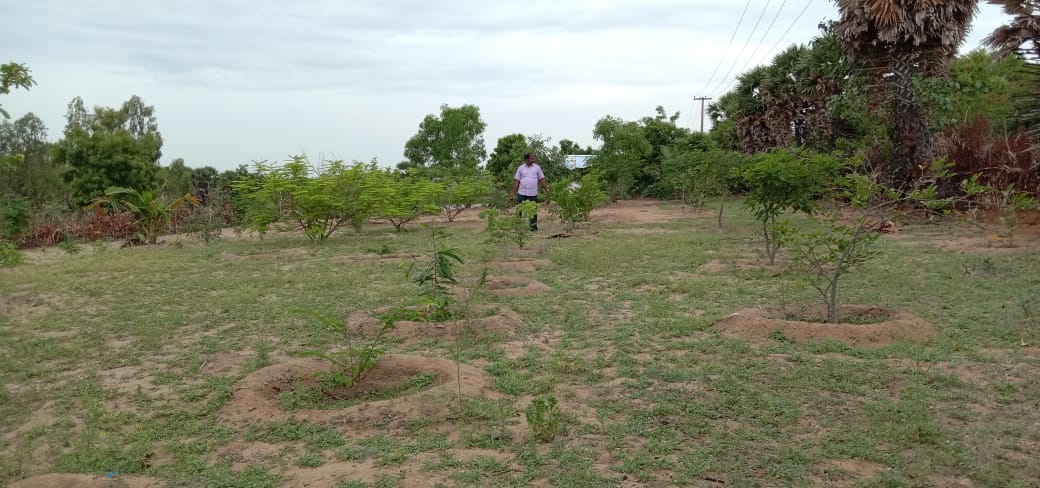
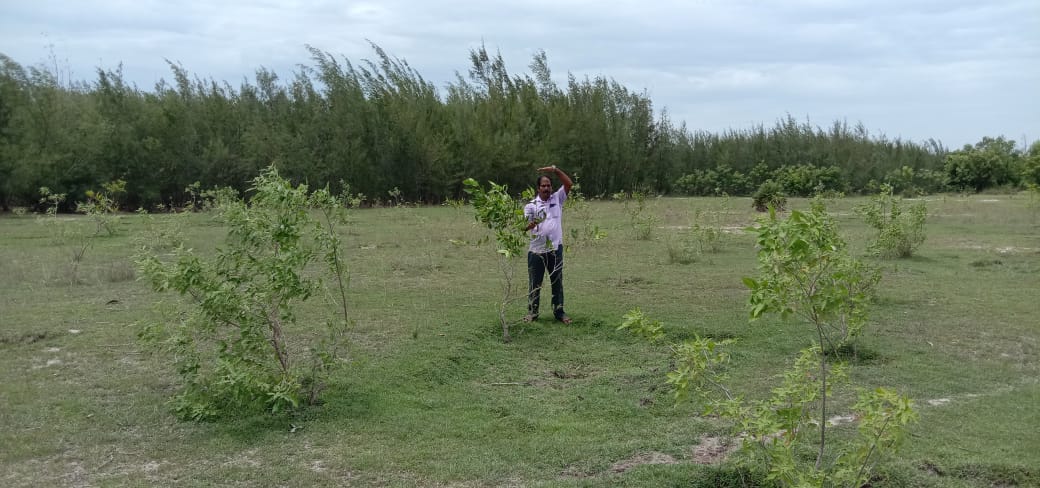
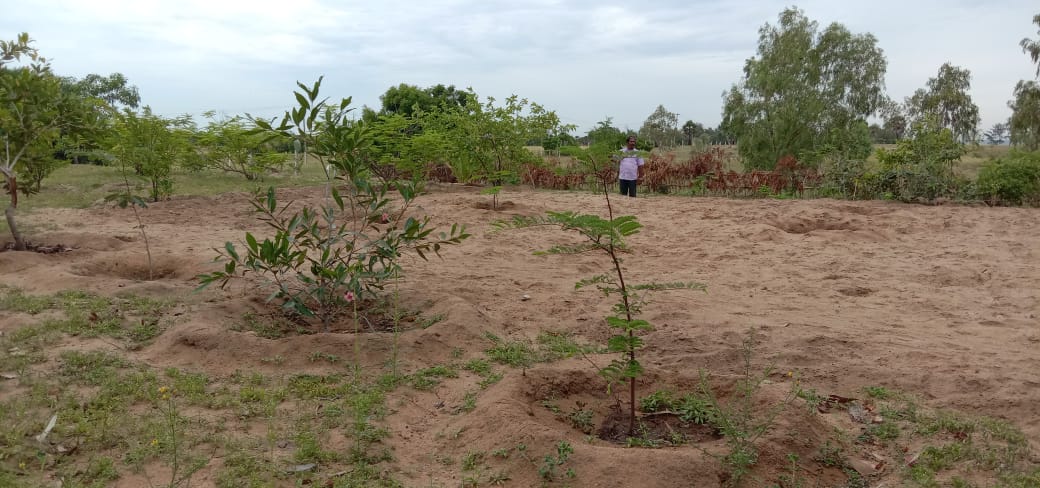
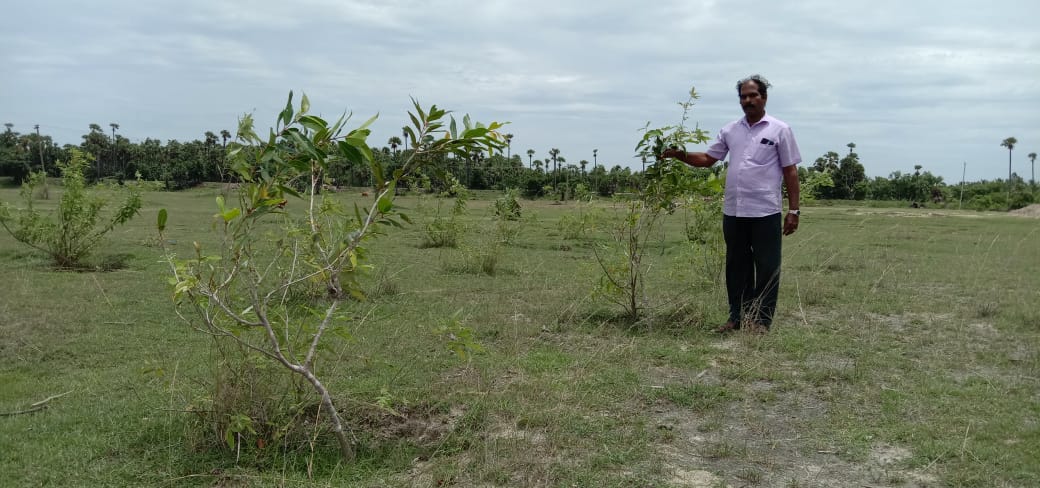
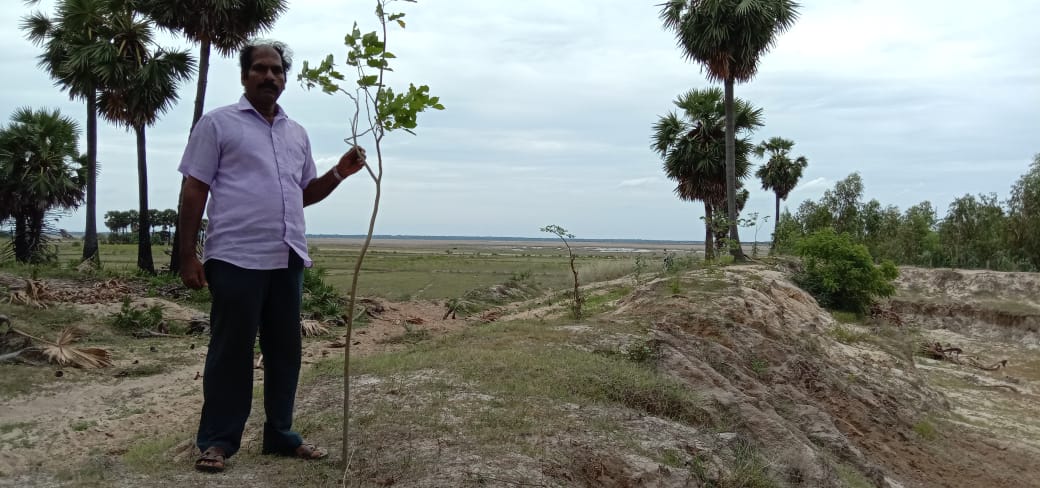
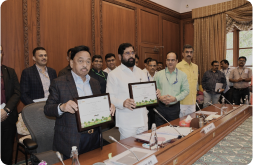
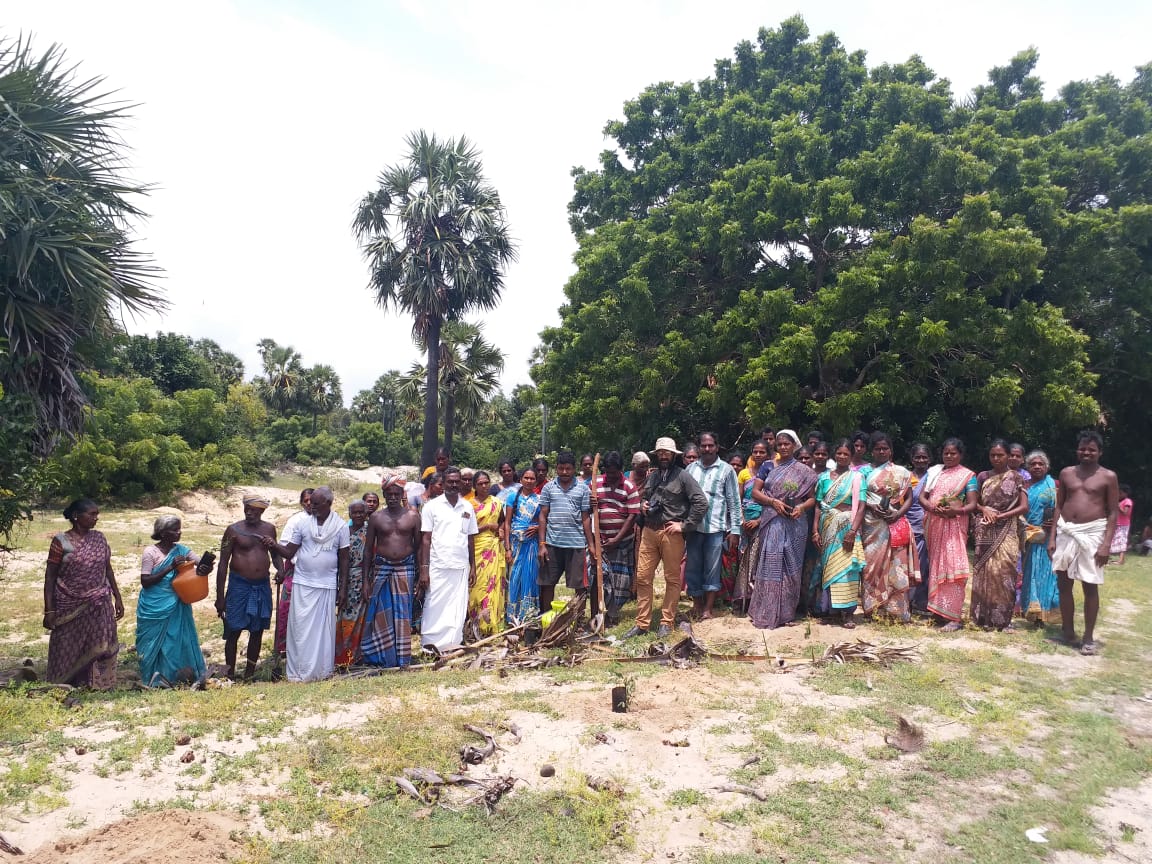
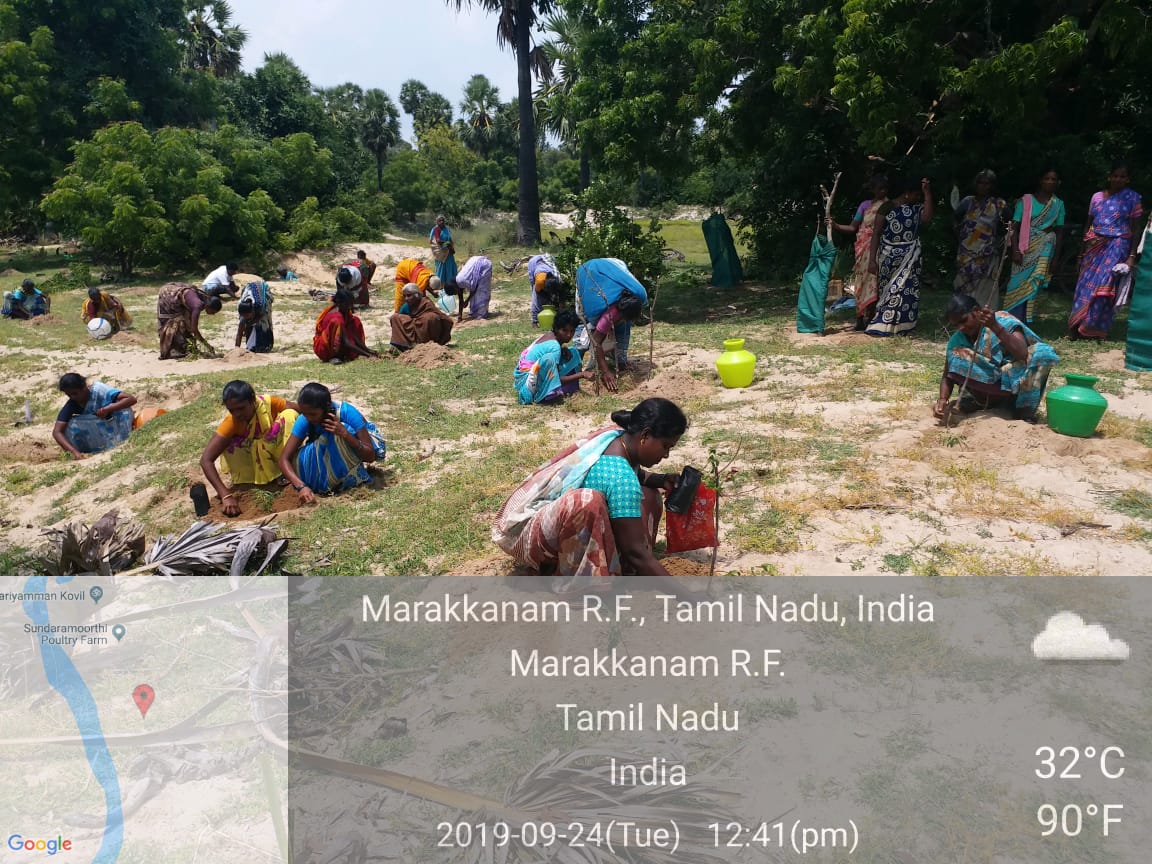
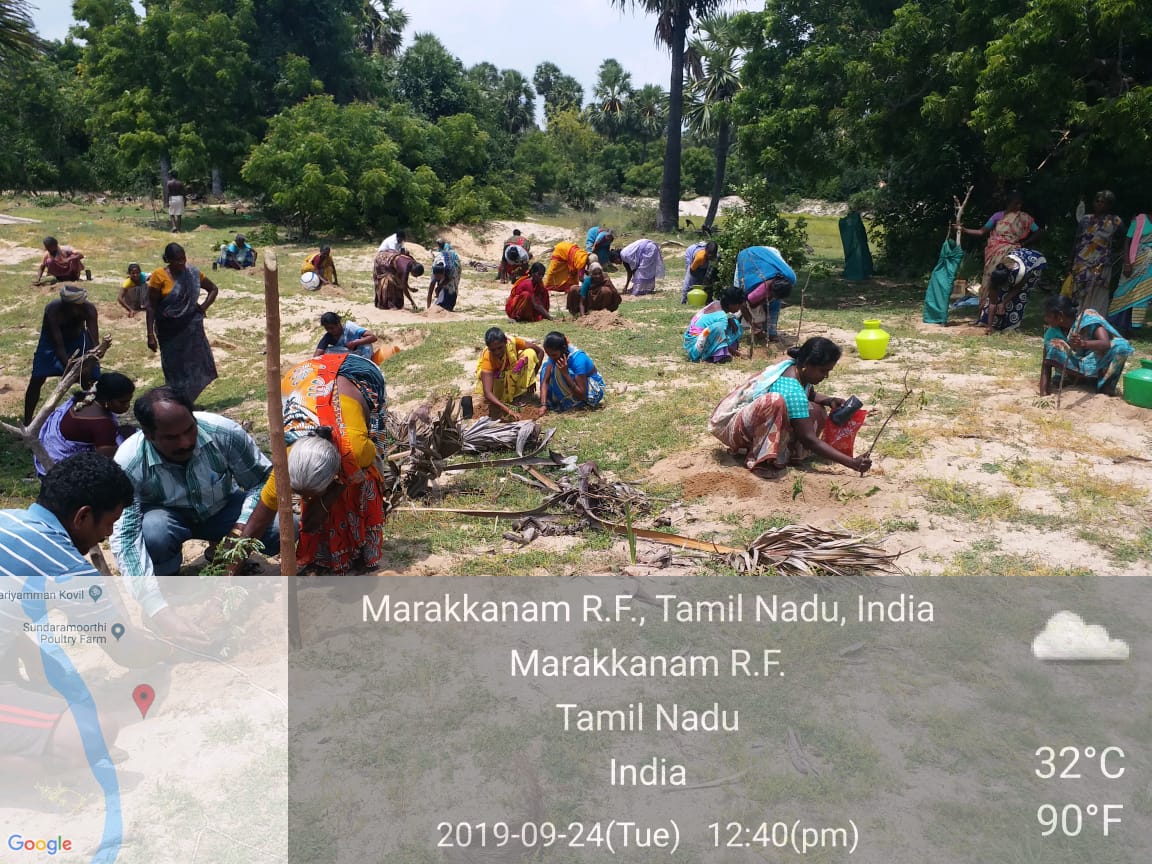
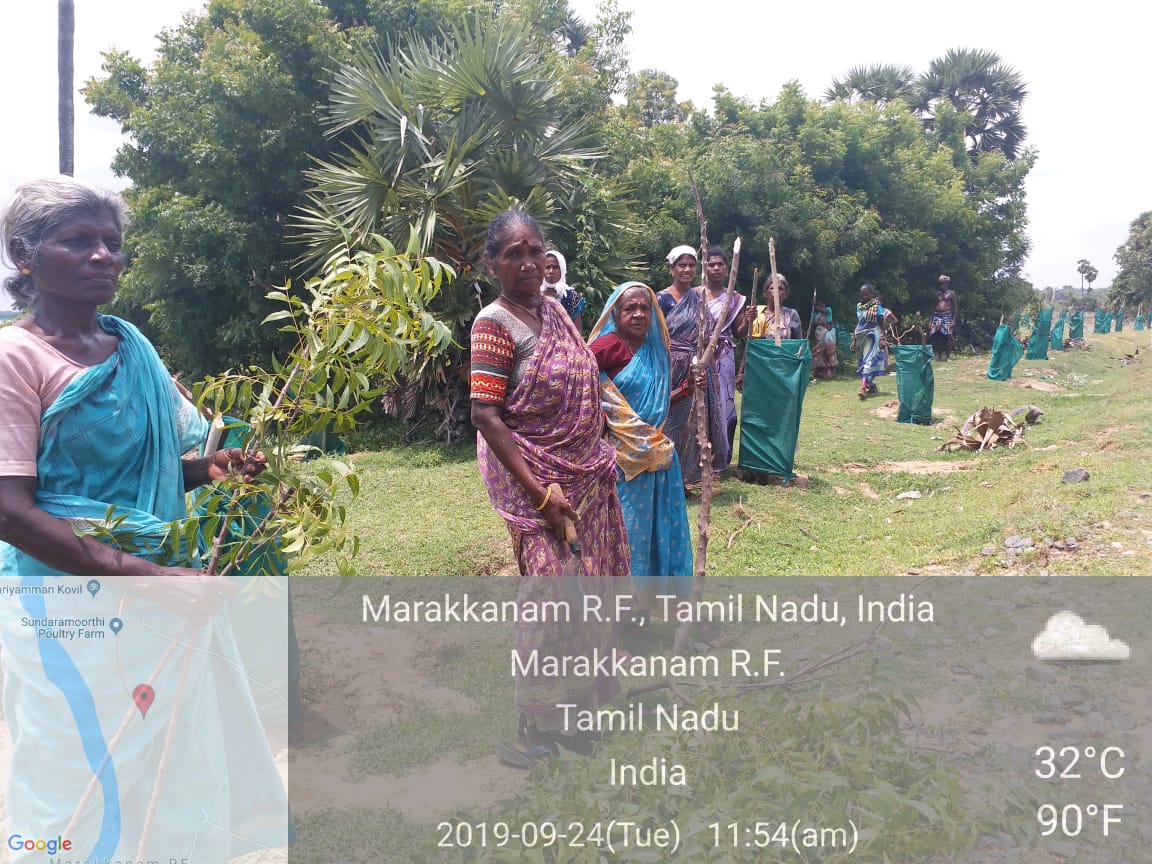
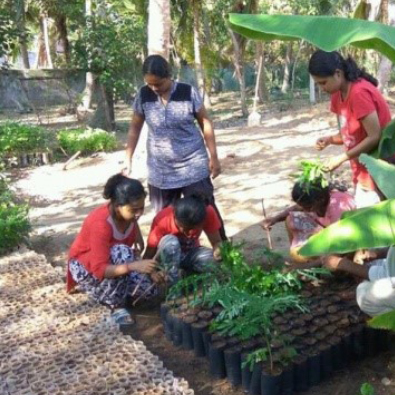
Project Target
0% Remaining
35,000
Trees Planted out of 35,000 Trees

Project Location:
The plantation project for 10,000 native tree saplings to be implemented on the catchment of the coastal Kaliveli wetlands and lagoons situated along the territory of Pondicherry-Tamil Nadu in southern India.
Project Aim
Between 2000 and 2012, 2.3 million square kilometres of forests around the world were cut down (The Nature Conservancy, 2015). Deforestation is often cited as one of the major causes of the enhanced greenhouse effect and a significant contributor to global warming (Fearnside, Philip M.; Laurance, William F, 2004. "Tropical Deforestation and Greenhouse-Gas Emissions"). The loss of forest cover influences the climate and contributes to a loss of biodiversity. The economic activity is adversely affected by siltation, flooding, soil degradation and reduced timber supplies which in turn, threatens the livelihood of people. Our plantation partner, CPF, seeks to address escalating climate and geographical disruption through sequestration of atmospheric carbon, replenishment of groundwater and rivers, protection of biodiversity and improvement of their habitat. Native tree plantation represents one of the simplest and best solutions to the myriad changing climate issues of our present-day planet.
Kaliveli is a seasonal wetland, with a gradient from freshwater to brackish water. The region is home to several rare and endangered floral, faunal and mostly avifaunal species. The wetland is considered of both national and international importance by the International Union for Conservation of Nature (IUCN). Increased encroachment from an expansion of agricultural fields, depletion of forests from changing land use patterns, loss of wildlife habitat and fragmentation, rapid soil, and increased deforestation are major conservation concerns for the region.
Forest cover is an essential natural habitat for birds to survive. Different birds have different preferences for trees to build their nests and shelters upon. Conservation efforts need to take into account the planting of trees which are preferred for nesting by migratory birds. Birds use these patches of greenery to rest and refuel in the middle of their journey between winter and breeding sites. Within migration, land birds spend up to 90% of their time resting and regaining energy at stopover sites, making habitat a key component
According to a study done by Swiss Federal Institute for Forest, Snow and Landscape Research with the Institute of Ecology and Evolution at the University of Bern, 13 species of birds will be found when no trees are present, whereas 20 species are in place when tree cover increases to 45 per cent. The researchers of this study determined that ‘the positive effect of trees outweighs the negative effect of sealed area and buildings. Therefore, increasing tree cover is a more promising and efficient measure to enhance bird species richness and diversity. Lastly, birds need rich natural habitat to feed young birds with insects found in a balanced ecosystem.
The Kaliveli region is mostly defined by the dry evergreen forest with pristine ravines and few man-made water bodies which can be broadly divided into 3 zones - Kaliveli floodplain, Uppukalli Creek and Yedayanthittu estuary. The region is rich in both floral and faunal diversity and is home to several rare, endemic and endangered species.
Floral species like Gloriosa superba and Derris ovalifolia are endemic to the region. Common fauna in the region includes the Jungle cat, civets, and diverse reptiles and the water bodies attract a large number of migratory as well as resident birds. The wetlands are breeding and roosting home to many near-threatened birds species like Spot-billed locally known as Kzhakada)or Grey Pelican (Pelecanus philippensis), Open billed stork, (Anastomus oscitans) locally as Nathai kothi narai and Painted stork (Mycteria leucocephala) Senegal narai among others. Several Dipterocarp fossils have also been located in the region.
Plants like golden apple (Aegle marmelos), Priyangu (Agalia elaeagnoidea), Sage-leaved alangium (Alangium salvifolium), Lebbeck (Albizia lebbeck), jackfruit (Artocarpus heterophyllus), Indian lilac (Azadirachta indica), mango pine (Barringtonia acutangula), amongst many others have been selected for plantations in Kolathur, Komadipattu, Kanthadu, Vada Agaram and Oorani.
Indian Bael (Aegle marmelos), Priyangu (Agalia elaeagnoidea), Sage-leaved alangium (Alangium salvifolium), Lebbeck (Albizia lebbeck), Jackfruit (Artocarpus heterophyllus), Neem (Azadirachta indica), Mango pine (Barringtonia acutangula).
This project of 10,000 trees will be seeking to improve around 800 workdays of the villagers - especially the tribal women. The promotion of indigenous tree species will aid the conservation of biodiversity by providing them with natural habitats and additional sources of food addressing degradation and habitat fragmentation; mainly for the endemic and migratory bird species. Increased ecosystem services in the form of fruit, fodder and non-timber forest produce on the maturity of planted trees will provide alternative income sources to the rural communities which will further lead to sustainable rural development. 10,000 trees are expected to offset about 2,00,000 of kgs carbon annually on their maturity. Not only this, several studies have shown that the planting of trees ensures that the rain droplets sink into the soil controlling surface runoff and thus increasing the groundwater table.
| Name of the Company | Number of Trees | Year |
|---|---|---|
| Larsen & Toubro Infotech Ltd | 25,000 | FY 2018-19 |
Social Impact of Growing Trees
Community Engagement
Tree planting initiatives often involve local communities, which can lead to greater community cohesion.
Ecological Education
Provides opportunities for community members, especially children, about the importance of environmental sustainability.
Urban Beautification
Trees contribute to the aesthetic enhancement of urban areas, making cities more pleasant and liveable.
Climate Resilience
By improving green cover, tree planting helps make communities more resilient against climate impacts like heatwaves.
Employment Creation
Planting trees creates employment for local community members like planting and maintenance, administrative roles, and more long-term jobs in management.
Wildlife Habitat
Trees provide critical habitats for various species of wildlife. Enhancing tree cover helps preserve biodiversity, which can be an ecological boon for local communities
Copyrights @ 2025 All rights reserved by Pangea EcoNetAssets Pvt Ltd.